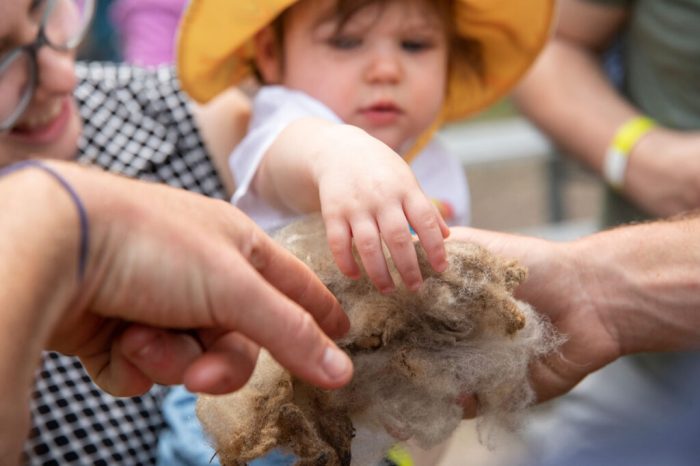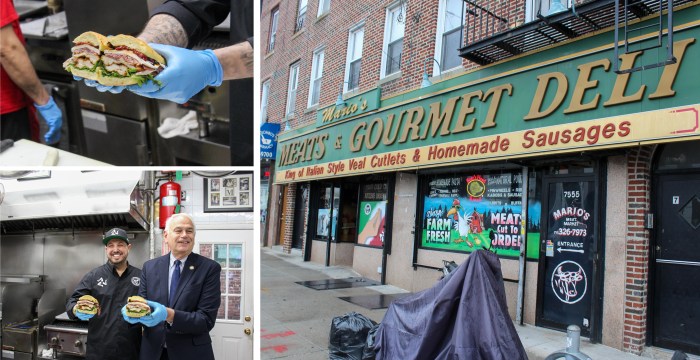By Alex Berger
M for the Music, merry and clear;
E for the Eve, the crown of the year.
R for the Romping of bright girls and boys;
R for the Reindeer that bring them the toys.
Y for the Yule log softly aglow;
C for the Cole of the sky and the snow.
H for the Hearth where they hang up the hose;
R for the Reel which the old folks propose.
I for the Icicles seen through the pane;
S for the Sleigh-bells, with tinkling refrain.
T for the Tree with gifts all a-bloom;
M for the Mistletoe hung in the room.
A for the Anthems we all love to hear,
S for St. Nicholas – the joy of the year!
– from “St. Nicholas” (January 1897)
Christmas for many Americans is the most important and merriest holiday of the year.
Originally it was a purely Christian festival day, and the very term “Christmas” means “Christ's Mass.” However, over the years, especially in multi-cultural America, it has taken on a secular component. Unique traditions have evolved around the holiday, and it's interesting how they originated
The Christmas Tree – As early as 1746, German settlers in Pennsylvania established the tradition of the Christmas tree in America. The custom of adorning trees dates back to Germany in the Middle Ages. The popular evergreen was viewed as a symbol of immortality and so was the Christmas tree of choice.
Santa Claus – The idea of Santa Claus, like America itself, is a combination of characters and customs gleaned from different parts of the world. His beginnings can be traced from the story of St. Nicholas in 4th century Asia Minor. He was introduced to the United States by the Dutch, who called him Sinterklaas. Since then he acquired a sleigh and eight reindeer, a red suit, a jolly disposition, a new name, and has become known to most children throughout the world.
I can hardly wait until old twinkle-eyed, jelly-belly Santa makes his annual appearance, wishing a “ho- ho-ho” to one and all. No wonder – if you had to work only one day a year, you would be “ho-ho-ho-ing” also. (Incidentally, I just heard an unbelievable rumor about Santa's wife, Mary. Last week, while Santa was bringing his reindeer out of mothballs for a nose-to-tail check-up before embarking on his trip around the world on Christmas Eve, she looked at his collection of motley reindeer and said, ” You old buzzard, enough already with tradition already. Why don't you trade in Donder, Blitzen, and the rest of your geriatric reindeer and get yourself a Lincoln Navigator instead?” Imagine that?)
“Silent Night” – On the day before Christmas 1818, in Oberndorf, Austria, Franz Gruber, the organist of St. Nicholas Church, discovered that rats had chewed a hole in the bellows of the organ. The vicar, Joseph Mohr, faced the prospects of a Christmas without music, so he set about writing the words of a new carol for which Gruber hastily composed the melody. At Midnight Mass with guitar in hand, Gruber led the congregation in the first rendition of this simple, now classic tune.
“The Night Before Christmas” – In 1822, as the story goes, Dr. Clement C. Moore, a New York clergyman, decided to entertain his children by composing a Christmas poem about St. Nicholas. He based the story on his own family's Christmas customs, and may have patterned his idea of St. Nick's character on the “fat and jolly, and bewhiskered” caretaker of his home. (However, a recent study of the poem's origin suggests that Dr. Moore may not have written this charming poem, but took credit for it when the rightful author died. We will never know).
Wreaths – Actually, wreaths were one of the oldest symbols to greet visitors to someone's home. Before the birth of Christ, the Romans placed decorative wreaths outside their doors as a sign that joy and happiness could be found inside. Different traditions dictated the type of materials to be used. Holly was originally used, but most wreaths were eventually made from boughs of evergreen because they were thought to symbolize eternal life. Now wreaths are made from all sorts of material but still have one thing in common: They all say, loud and clear, WELCOME
Gift Giving – exchanging presents on Christmas stems from the account of the Three Wise Men bringing gifts to the newborn Jesus. When Jesus grew up, he couldn't have imagined – nor would he likely have condoned – the pressures of gift-giving that now mark Dec. 25 (which, by the way, almost certainly was not the true date of his birth).
Ah, yes, gift-giving. Speaking for myself, I don't know why, but I always buy my Giants season football tickets six months in advance, but I will wait until Christmas Eve to go shopping. Don't get me wrong, I love Christmas, but why does it always come when the stores are most crowded? Last year, I squeezed into one store to do some holiday shopping. And it was so crowded that when I scratched my back, four girls slapped me.
However, I just love receiving wonderful gifts, and I can't wait to exchange them. Nonetheless, the holiday was more fun when I was a kid Somebody else was paying for the gifts. Last year I gave Gloria a new wristwatch which was waterproof, dustproof, and shockproof. Yesterday, it caught fire.
This is a hectic time for us. Gloria has to find a way to hide the presents and I have to find a way to pay for them.
Well, here I am bubbling over with Christmas spirit, which means, of course, that I haven't received my credit-card bill yet. This morning when I opened my front door I saw a sign attached that read, “Merry Christmas, Lots of cheer, Remember me, Or freeze next year.” Signed, Your Janitor.
But truthfully, of all the gifts you can give, the best one that is guaranteed to fit everyone is a hug.





























